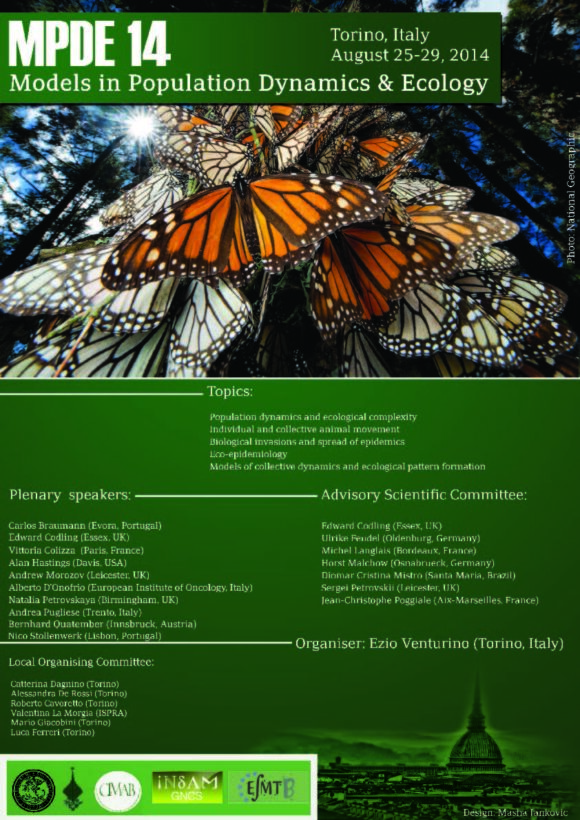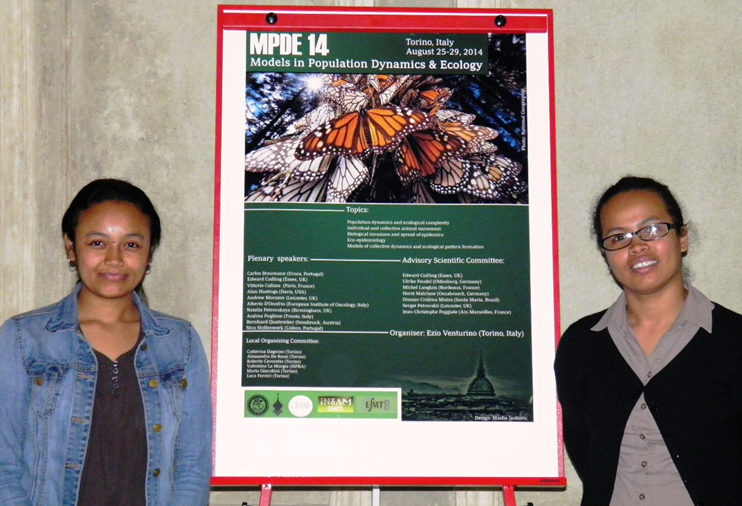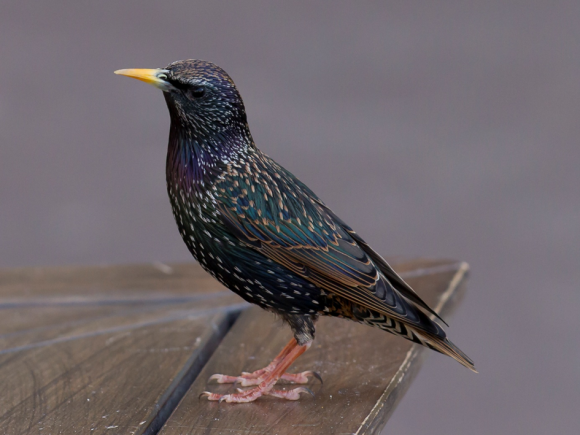22 September 2014 | By Ony Minoarivelo and Mihaja Ramanantoanina
 The annual Models in Population Dynamics and Ecology (MPDE) Conference, is one of the leading conferences that explore topics on ecological modelling. Hosted by the University of Turin, Italy, the conference took place from 25 – 29 August 2014. Among this year’s participants were C·I·B representatives, PhD student Ony Minoarivelo and former C·I·B student Dr Mihaja Ramanantoanina.
The annual Models in Population Dynamics and Ecology (MPDE) Conference, is one of the leading conferences that explore topics on ecological modelling. Hosted by the University of Turin, Italy, the conference took place from 25 – 29 August 2014. Among this year’s participants were C·I·B representatives, PhD student Ony Minoarivelo and former C·I·B student Dr Mihaja Ramanantoanina.
Ony Minoarivelo presented research that has been published in the scientific journal, Oikos. Her work developed a mathematical model that describes how insect pollinators and frugivorous (fruit-eating) birds ensure pollination and seed dispersal of their respective plant partners in large communities of plants and animals. Making use of published datasets of pollination and seed-dispersal networks, Ony found that the phylogenetic history of each animal and plant species present in a community plays an important role in shaping the organisation of pollination and seed-dispersal events of the entire community.
Ony explains that, “knowledge of the different factors that shape a well-organised structure in pollination and seed-dispersal networks is a step forward in realistically modelling these interactions.” “A better understanding of these interactions will help us to examine how these communities may respond towards environmental perturbations,” says Ony.
Mihaja’s work looked at a mathematical model for the spread of populations, in which the propagule pressure is measured as the propagule size (number of individuals) and composition (namely the distribution of dispersal abilities of the individuals). Dispersal abilities refer to an individual’s ability to move or fly, and are inherited from parents through traits such as leg length or wing shape. The results showed propagule pressure as an alternative explanation to the rate at which species spread, and that the expansion of a population’s range is determined by the ability of the individuals at the edge of the invasion. This suggests that data collected from the core of an invasion may underestimate the rate at which a population can spread from one area to a new area.
“This research gives biologists a more accurate estimate of the rate at which species expand their ranges – figures that are crucial for the timely management of invasive species.” says Mahaja Ramanantoanina, lead author of the paper published in PLoS ONE.
For more information, contact Ony at minoarivelo@sun.ac.za and Mihaja at ar@aims.ac.za
Read the papers


